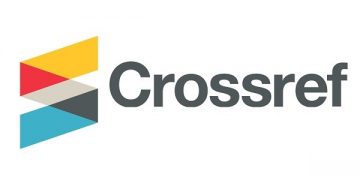THE SECRETS BEHIND CHILDREN'S RAPID LANGUAGE ACQUISITION: A PSYCHOLINGUISTIC PERSPECTIVE ON EARLY CHILDHOOD LEARNING
DOI:
https://doi.org/10.61722/jssr.v2i6.2981Keywords:
Language Development, Psycholinguistics, Early Childhood, Memory SystemsAbstract
This research explores the process of rapid language acquisition in children aged 0–6 years, focusing on the psycholinguistic perspective. The study aims to uncover the primary factors influencing language learning and the mechanisms that facilitate it. Using a literature review approach, data were gathered and analyzed from academic journals, books, and case studies. The results indicate that language development is driven by biological factors, such as neuroplasticity, and environmental influences, including parental communication patterns like motherese. Furthermore, declarative and procedural memory systems play a crucial role in building vocabulary and mastering grammar. Unlike adults, children learn language more effectively through natural interactions in daily life. This research contributes to the creation of appropriate strategies for early language education. Future studies could investigate multilingual language development and the effects of digital technology on children’s language acquisition.
References
Belgrave, M. (2015). The 20th International Seminar of the ISME Commission on Music in Special Education, Music Therapy, and Music Medicine. Approaches: An Interdisciplinary Journal of Music Therapy, 7(2).
Bilingualism in the Early Years: What the Science Says - PMC https://pmc.ncbi.nlm.nih.gov/articles/PMC6168212/
Brown, R. (1973). Bahasa Pertama: Tahap-Tahap Awal. Harvard University Press.https://repository.unej.ac.id/jspui/bitstream/123456789/82702/1/Buku%20Memahami%20Pemikiran.pdf
Chomsky, N. (1965). Aspects of the Theory of Syntax. MIT Press.https://mitpress.mit.edu/9780262530071/aspects-of-the-theory-of-syntax/
Critical Period Effects in Second Language Acquisition: The Effect of Written versus Auditory Materials on the Assessment of Grammatical Competence. https://www.academia.edu/7674409/Second_Language_Learning_and_Language_Teaching
DeKeyser, R. M. (2000). Ketahanan Efek Masa Kritis dalam Pemerolehan Bahasa Kedua. Studies in Second Language Acquisition, 22(4), 499–533.https://jbasic.org/index.php/basicedu/article/download/6038/3041/21941
Ellis, R. (2002). Second Language Acquisition. Oxford University Press.https://escholarship.org/content/qt6wg540t3/qt6wg540t3.pdf
Ghalebi, R., & Sadighi, F. (2015). The usage-based theory of language acquisition: A review of major issues. Journal of Applied Linguistics and Language Research, 2(6), 190-195.
Golinkoff, R. M., Can, D. D., Soderstrom, M., & Hirsh-Pasek, K. (2015). (Baby) talk to me: The social context of infant-directed speech and its effects on early language acquisition. Current Directions in Psychological Science, 24(5), 339-344.
Hamidi, E., & Bagherzadeh, R. (2018). The logical problem of scaffolding in second language acquisition. Asian-Pacific Journal of Second and Foreign Language Education, 3, 1-14.
Hartshorne, J. K., Tenenbaum, J. B., & Pinker, S. (2018). A critical period for second language acquisition: Evidence from 2/3 million English speakers. Cognition, 177, 263-277.
Jansen, P. S. (2024). Exploring The Effects of English as a Foreign Language on First Language Development of Young Children: The Case of Greece. Development, 12(2), 44-75.
Kartal, G., & Sarigul, E. (2017). Frequency Effects in Second Language Acquisition: An Annotated Survey. Journal of Education and Training Studies, 5(6), 1-8.
Kazi, S., & Galanaki, E. (2020). Piagetian theory of cognitive development. The encyclopedia of child and adolescent development, 1-11.
Krashen, S. (1985). Hipotesis Masukan: Isu dan Implikasi. Longman.https://ejournal.unida.gontor.ac.id/index.php/tadib/article/view/504/445
Lenneberg (1967) E. H. Dasar-Dasar Biologis Bahasa. Wiley.https://repositori.kemdikbud.go.id/16134/1/Ilmu%20Bahasa%20Umum%201994.pdf
Major, C. A. (2014). The effect of age on second language acquisition in older adults. Brigham Young University.
McLeod, S. (2022). Vygotsky’s sociocultural theory of cognitive development. Retrieved from Simply Psychology: https://www. simplypsychology. org/vygotsky. html.
Piaget, J. (1959). Bahasa dan Pemikiran Anak. Routledge and Kegan Paul.https://www.scirp.org/reference/referencespapers?referenceid=1569782
Relationship between working memory and complex syntax in children with Developmental Language Disorder
Sampson, G. (2019). Chomskys Universal Grammar: A Chronological and Critical Overview.
Siahaan, F. (2022). The Critical Period Hypothesis of Second Language Acquisition Theory of Eric Lenneberg's. The Explora, 8(2), 28-34.
Snow, C. E. (1977). Perkembangan Percakapan Antara Ibu dan Bayi. Journal of Child Language, 4(1), 1-22.https://www.researchgate.net/publication/231860182_The_Development_of_Conversation_Between_Mothers_and_Babies
Tomasello, M. (2003). Membangun Bahasa: Teori Pemerolehan Bahasa Berbasis Penggunaan. Harvard University Press.http://lib.unnes.ac.id/58151/1/2.%20Teori%20Pemerolehan%20Bahasa%20Pengantar.pdf
Tomasello, M. (2009). The usage-based theory of language acquisition. In The Cambridge handbook of child language (pp. 69-87). Cambridge Univ. Press.
Vygotsky, L. S. (1978). Pikiran dalam Masyarakat: Perkembangan Proses Psikologis Tingkat Tinggi. Harvard University Press.https://www.academia.edu/35821045/Terjemahan_pengantar_Mind_in_Society_Lev_Vygotsky
Downloads
Published
Issue
Section
License
Copyright (c) 2024 JOURNAL SAINS STUDENT RESEARCH

This work is licensed under a Creative Commons Attribution-ShareAlike 4.0 International License.














